LD7068 Assignment Sample – Food Industry Component 1 & 2 2022
Part A: Supply Chain Risk Management
Introduction
“Supply chain risk management” can be referred as a process to take strategic steps for assessing, identifying and mitigating the risk in the supply chain. A comprehensive approach to supply chain risk management involves the management of risks for suppliers, locations and others. This part sheds light on entire structure of supply chain in food industry, risks identified in food supply chain and benefits of managing them.
Discussion
The structure of supply chains in food industry
According to Baryannis et al. (2019), the food industry has a significant role in providing basics and necessity to support human activities and behaviours. The food, after harvested and produced, should be delivered to reach the final customers by the due date. Food supply chain management (FSCM) is the basis to process, manufacture and transform the raw materials from major activities such as zootechniques, agriculture, forestry, finishing and others (Zhong, Xu & Wang, 2017).
The framework is helpful to understand the interactions among the logistics, operations to support risk management. It identifies the optimal network configuration, supply chain integration and inventory management policies (Miranda-Ackerman, Azzaro-Pantel & Aguilar-Lasserre, 2017). It is observed that framework supplies and collaboration are important to identify the constraints such as the agri-food industry and time. FSCM depends on ICT based solutions such as traceability systems, decision-making systems and others. The main supply chain structure can be defined through the below image.
It identifies the pathways including the raw material services component and manufacturing process to distribute the products to the final customers and intermediates (Patel & Deshpande, 2015).
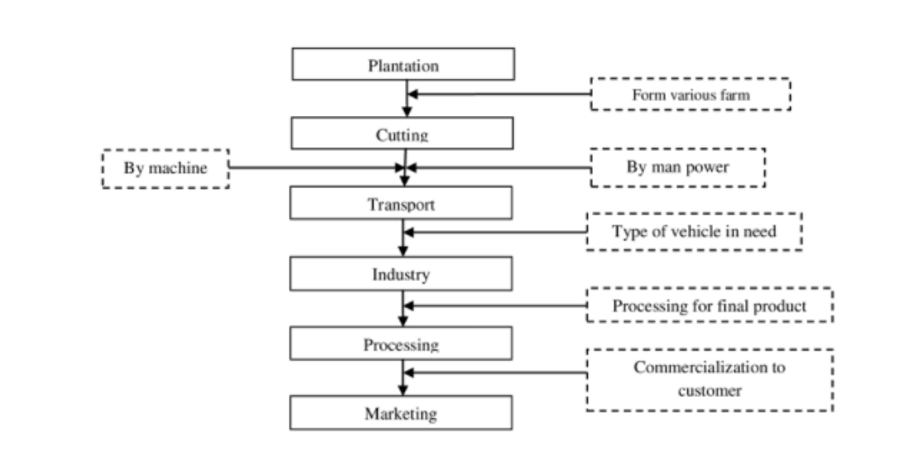
Figure 1: Structure of supply chains in food industry
(Source: Patel & Deshpande, 2015)
Risks in food supply chain
There are several potential risks found in the food supply chain, such as:
- Company governance and organisation
- Recall management
- Marketplace evaluation
- Difficulty facing to define supply chains
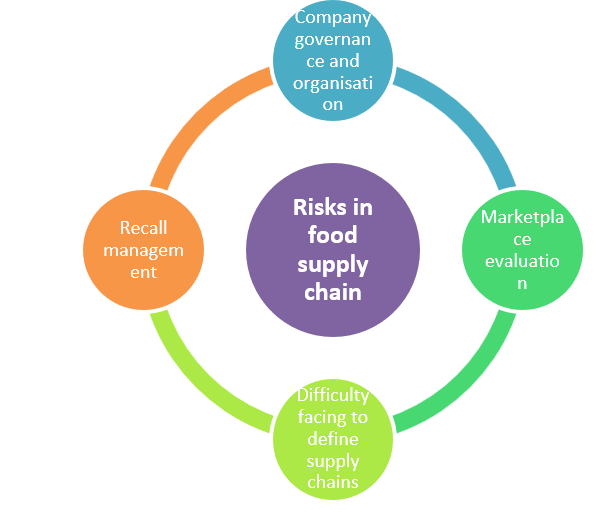
Figure 2: Supply chain risks in food industry
(Source: Created by author)
Many companies, from beverage manufacturers to food retailers and restaurants, found it difficult to document the end-to-end supply chains. It is essential for understanding the supply chain for meeting the federal regulations, satisfying the consumer demands and mitigating the risk to enhance supply chain transparency, quality and safety measurement (Deloitte US, 2021). ISAI global identified the risk that can compromise the integrity of the food industry supply chain and customer safety.
- Fierce competition on supply cost is found. Due to continuous pressure on supply cost, the food organisations face risk accordingly supply chain increasing and manufacturer control (Rueda, Garrett & Lambin, 2017).
- Most of the organisations are monitored first and second-tier suppliers.
- The food companies manage suppliers through arrangements of contracts and formal monitoring. The suppliers can act to monitor subcontractors on third and second tires supply to assess the risks of product integrity (Foodprocessing.com.au, 2021).
- There are risks regarding raw materials through agents and brokers. The company has faced the risk to lose control of supplier relationships sometimes.
- Food brands could have inadequate resources to mitigate the risks.
- There are financial incentives for the retailers regarding managing the downstream risks and food retailers brand integrity (Heard et al., 2018).
Potential benefits to address the supply chain risks
For addressing the supply chain risks, there are potential benefits to identify how the risk management can be focused on delivering standard safety and quality configurations on food supply chains. The benefits are regarding supply chain operations and government focus to identify the system implementations for future actions (Baryannis et al., 2019). The “key benefits for effective supply chain management” are:
- Better collaboration
- Improving quality control regarding on-time delivery, scrap rates, on-time complaints, performance measurement and others
- It can increase higher efficiency rate with real-time data on the manufacturing and raw material supply
- Satisfying the customer’s demand (Deloitte.com, 2021)
- Shipping optimisation as per the logistics management in supply chain
- Reduced overhead cost for better inventory management
- Cash flow can be improved over the demand changes and supply chain disruption. It implements the cost-effective solutions to eliminate the negative cash flow (Baba et al., 2019).

Figure 3: Food industry supply chain
(Source: Deloitte.com, 2021)
The above figure shows commodities, primary processors, inbound logistics, manufacturing operations, outbound logistics and customers as supply chain participants. The food companies consider addressing the challenges to focus and supplier life cycle into the business strategies.
Foundation requirements in supplier risk management can be focused on quality, cost, safety and timeliness (Foodprocessing.com.au, 2021). It is to consider the improvement of the organisational structure and corporate strategies that can ensure the effectiveness of food supply risk management.
Limitations to address the supply chain risks

Figure 4: Supplier risk management framework
(Source: Deloitte.com, 2021)
The above image discusses the supply chain framework for company culture, governance, policies, processes, tools and metrics in the food industry. Ensuring the food supply management is limited in certain contexts (Demartini et al., 2018). The limitations of risk management can be identified such as:
Mismanaged implementation:
Changing supply chain management can take financial investments, human resources and time. It can be implemented to focus on avoiding unnecessary cost and high-quality logistics.
Inadequate training:
Inadequate training is a limitation to manage the supply risk framework for the food industry. While searching for logistics, excessive employee turnover can be identified to define the transition process and on-boarding systems to fit the unique timelines and demands (Deloitte.com, 2021).
Short-sighted logistics:
Consolidation opportunities are identified as limitations to decrease the supply chain efficiency. Regarding additional savings and opportunities, the food company can identify the market demands in this contexts (Bergendahl, Sarkis & Timko, 2018).
Future actions
SCRM is effective to identify how the future development to recognise finances, legislation or external environment processes can be improved based on customers point of consumption. The below image identifies source reduction, redistributive processes, recycling recovery and landfill as steps for future sustainability on the food supply chain (Vågsholm, Arzoomand & Boqvist, 2020).
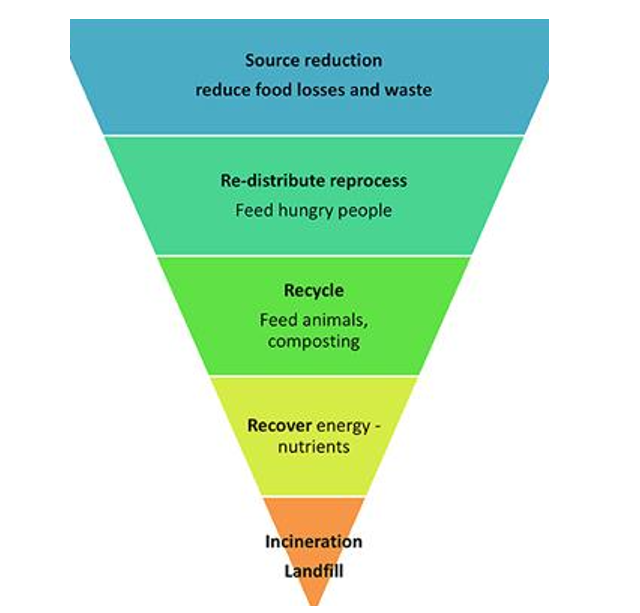
Figure 5: Food security and safety
(Source: Vågsholm, Arzoomand & Boqvist, 2020)
Future proofing:
Possible legislation in food supply should be implemented to improve the organisational structure and opportunities for innovation.
Identifying customer’s point of consumption:
The supply chain development can be improved for future development and add business values for financial and risk view. The preliminary views for food risk management are used as a tool that the companies can use to improve the operations while reducing the risks (Deloitte.com, 2021).
Potential business values:
Supply risk, resource allocation and visibility into supplier programs are the effectiveness to improve the supply chain development and the view for food risk management (Chen, Liu & Oderanti, 2020).
Visibility into management program:
Risk and financial advisory of the food companies can identify the tools that the company can improve product safety and customer demands. The growth of private labels is ever changing to satisfy the customer in terms of safety, integrity and quality (Vågsholm, Arzoomand & Boqvist, 2020).
Conclusion
From the above discussions, it is found that the supply chain in the food industry is facing several risks regarding competition, organisational supplement, food manufacturing and raw materials risks. It is found to identify the supply chain for government regulations and legal frameworks for customer safety. The food industry’s supply chain continues to evolve in complexity to manage safety risk and understand the challenges and potential solutions.
Part B: Sustainable Supply Chain Management
Introduction
Sustainable supply chain management produces safe and healthy products in the context of market demands. A sustainable food supply chain identifies healthy products and nutritious food to maintain consumer safety (Genovese et al., 2017). This part highlights the sustainable approach of the food supply chain. Additionally, governance involvement and stakeholder analysis will be highlighted with sustainable supply chains.
Discussion
Sustainable approach in food supply chain
The sustainable food supply chain includes different stakeholder views for producing applicable factors that influence the entire supply chain framework.
- It produces healthy and safe products (Unep.org, 2021).
- Supporting diversity and viability of the urban and rural communities
- Operating and respecting the biological limits of natural resources
- Ensuring a hygienic and safe working environment for social welfare and training of the employees in the food chain
- High standards of performance regarding energy consumption, renewable energy and minimising resource inputs
- Sustaining resources for supplying the food to meet the public benefits
- Enabling the livelihoods for the land management
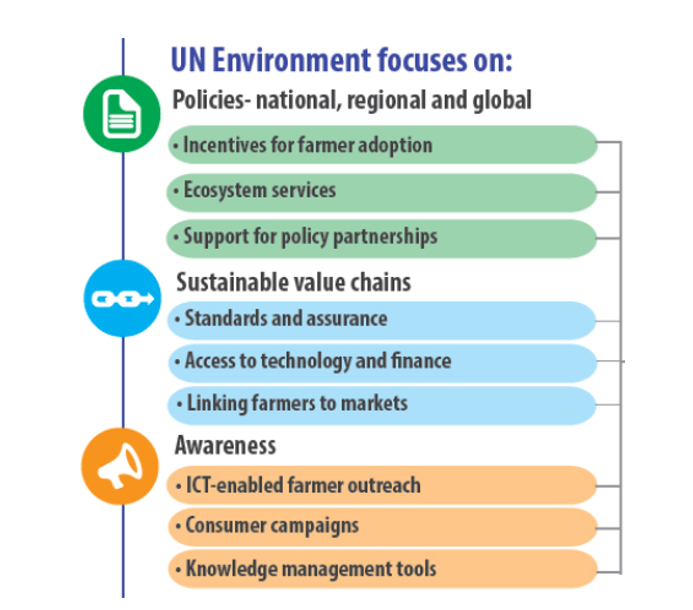
Figure 6: Sustainable food production
(Source: Unep.org, 2021)
The above image identifies the UN focuses on policies based on regional, national and global for sustainable food production. It identifies the policy of sustainable value chain addressing food waste and stimulates the market demands (Unep.org, 2021). Food safety, security and sustainability are the goals to ensure eradication of hunger. Sustainability to food security includes the challenges of political, imperative food security, source reduction and reducing waste. It includes the viability for logistics providers, transportation and increasing consumers.
‘The triple bottom line’ (TBL)
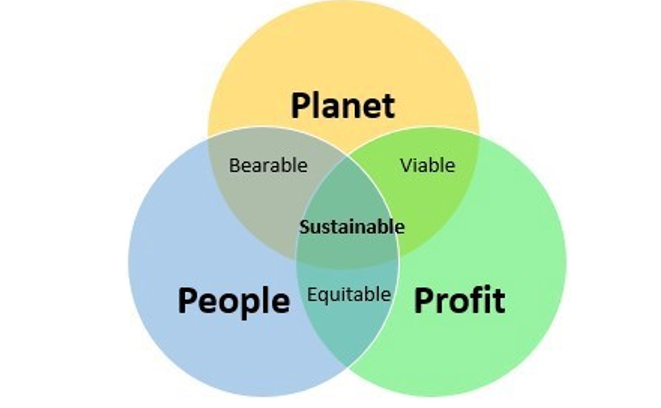
Figure 7: Triple bottom line (TBL)
(Source: Tseng et al., 2020)
Triple bottom line (TBL) is a theoretical framework that the companies apply to commit environmental and social concerns (Cousins et al., 2019). TBL includes one line of profit, people and planet. Profit is measured regarding traditional measures over the account. People are measured how the organisation is responsible socially throughout its history. Planet has measured environmental responsibility for financial issues.
TBL includes the parameters for influencing the factors such as legislation, environmental impact, finance and external and internal processes of the organisation (Tseng et al., 2020). TBL explains how it can help the food manufacturers regarding policymaking and economic development. Based on the 3Ps, the profits can be measured over the social impact and philosophical grounds for social and environmental damage. It is to measure sustainability for food safety and economic measures. Social measures and environmental measures are the main concerns regarding natural resources, energy consumptions, solid waste and others.
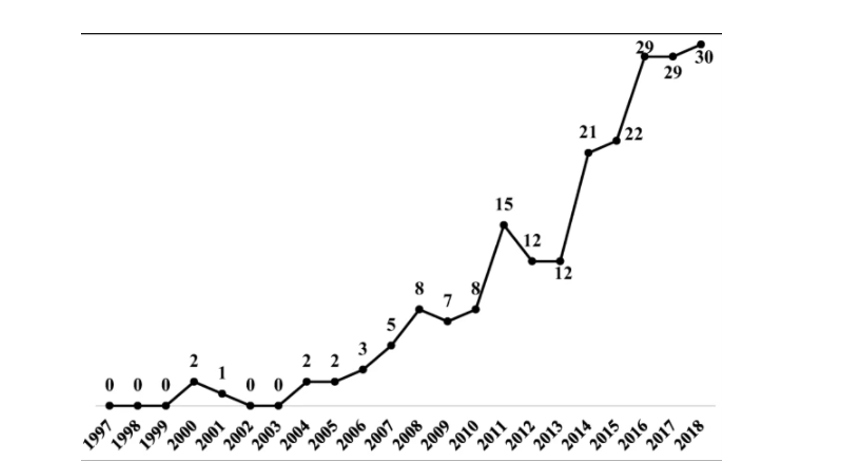
Figure 8: Trends in TBL
(Source: Tseng et al., 2020)
The above diagram identifies the concerns to the supply chain field and the trends from 1997 to 2018. The trains are shown on the economic aspect of TBL.
Governance in relation to legislature compliance
According to the guidelines, the food industry needs to be safe to eat and consumers can be informed about their choices about the food. As per “the department of health, food standards Australia New Zealand and other agencies developing food regulations policies and domestic food standards”, it is important to focus on safe provisions of foods (Agriculture.gov.au, 2021). It helps New Zealand and Australia domestic and national food standards to facilitate the harmonisation.
The food regulatory system involves and the food compliances for “general food standard, specific food standards and food safety standards”. The New Zealand Government and Australian territory government have implemented the food standards by FSANZ. “Imported Food Control Act 1992” identified for maintaining the food standards regulation authority for food sustainability and consumer safety (Food Regulation, 2021).
Techniques and operational impacts
Food system sustainability is significant that can be improved based on new technology involvements. One-third of the global population suffers from malnutrition and undernourishment (Emamisaleh & Rahmani, 2017). The operations in food supply chain are involved with food loss and waste kind of global issues. The below image identifies the food laws and their drivers. The food technologies and innovations include mitigating the demand for sustainable food over the food loss and drivers in food waste (Lindgren et al., 2018).
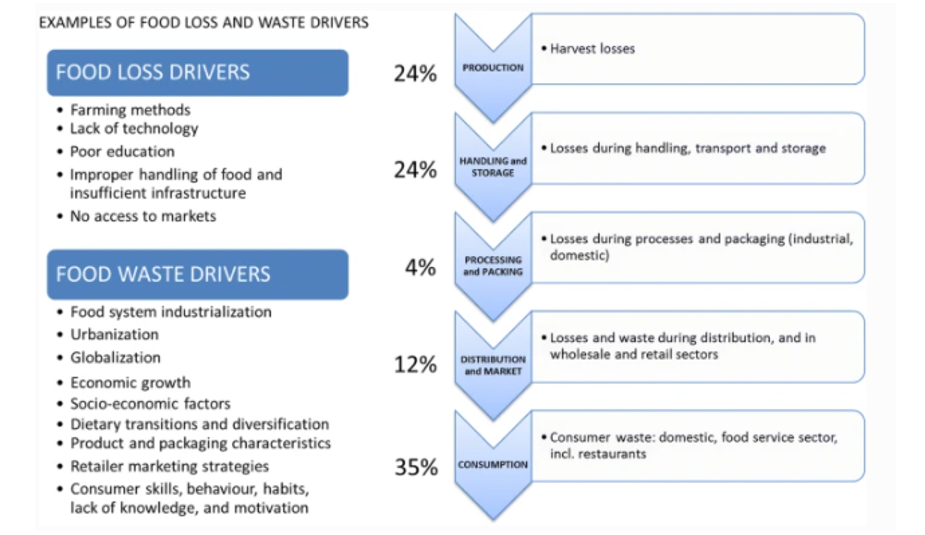
Figure 9: Food losses and waste along the food supply chain
(Source: Lindgren et al., 2018)
As the global population is growing rapidly, there are interests regarding farming techniques in controlled indoor settings. For example, hydroponic, aquaponic and aeroponic are the techniques to control the greenhouse of some buildings and develop storage facilities for the local markets (Jia et al., 2018). In addition, the food supply chain confirms the sustainability to improve the infrastructure, technologies, and energy as examples of actions at the infrastructure, production and transport levels.
Stakeholders in shaping supply chain governance approaches
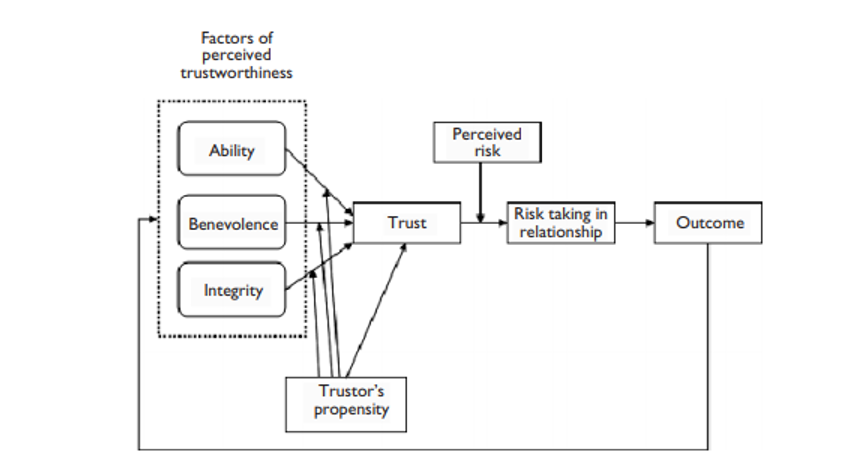
Figure 10: A model of trust-building
(Source: H.T.Walker, Bourne & Rowlinson, 2021)
The figure identifies the teambuilding and trust development among the stakeholders regarding managing the food supply chains. In managing the food supply chain, the stakeholders are engaged to consider the assets and contribute the knowledge (Bergendahl, Sarkis & Timko, 2018).
It is important to focus on loyalty and emotional facets to build a strong stakeholder engagement in the food industry. Emotional facets can be extremely strong to displace the commitments based on self-actualisation and motivation (Demartini et al., 2018). In shaping the supply chain governance, commitment and compliance should be interrelated while creating trust between them
The below figure identified the commitment, motivations and perceived cost of loss and reciprocating needs. Self-actualisation, safety and social needs are the keys to make the connections between the people (H.T.Walker, Bourne & Rowlinson, 2021).
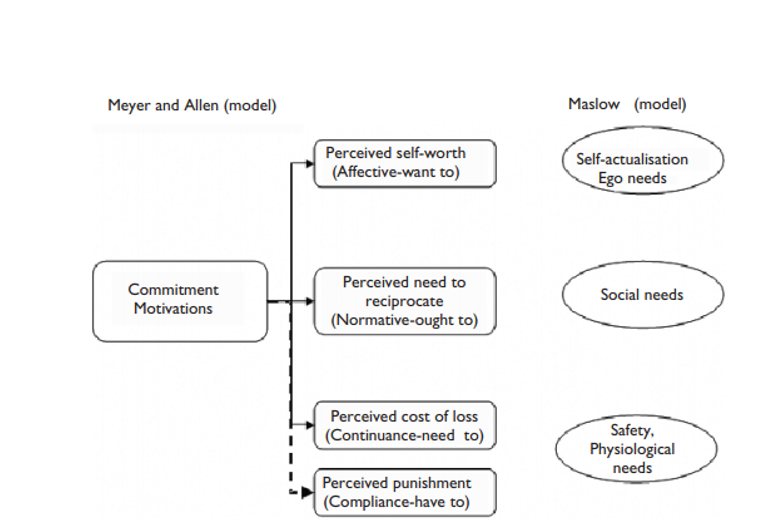
Figure 11: Compliance and commitment
(Source: H.T.Walker, Bourne & Rowlinson, 2021)
Benefits and disadvantages of managing sustainability in food supply chain
Benefits:
Benefits of the sustainable food supply chain are:
- Supply chain connects the customers with services and products across the country.
- It reduced environmental impact due to the logistics and supply chain of food processes.
- It protects organisations against reputational damage (Saberi et al., 2019).
- There is potential for new partnerships regarding sustainable food supply chains.
- Adopting more customers and a huge base can be identified.
- It imports constant innovation and commitment to an indefinite process.
- The companies can prepare long-term plans for the supply chain sustainability in both brand enhancements and financial terms.
- The supply chain is needed to implement a system for potential pitfalls and benefits.
Additionally, the sustainable supply chain includes the food processing and packaging for a long and improved supply chain to lead the change. In this context, the manufacturers and suppliers have the duty to manage the sustainable approach in processing the food products (Saberi et al., 2019).
Disadvantages:
There are challenges and conflicts in “sustainable supply chain”. The challenges are regarding:
- Cost increasing
- Changing culture and mindset
- Operationalisation of sustainable development
- Management of uncertainties
- Complexity of problems in trade offs
Supply chain is defined over the transparent and strategic integration to achieve the organisation’s social, environmental and economic sustainability (Jia et al., 2018). To focus on conflict management and organisational development, sustainable food chains have faced resource issues, pollution, issues in using chemical products as mandatory for pesticides and herbicides.
Conclusion
From the above discussion, it can be concluded that a sustainable food chain can have different perspectives to minimise the risk of environmental, economic and social in relation to customer consumption through the product life cycles. It identifies the issues of economic and sustainable approaches with government legislation and compliances. Associated shareholders apply different governance approaches through technology and environment orientations.
Reference list
Agriculture.gov.au (2021). agriculture.gov.au Retrieved 14 May 2021, from https://www.agriculture.gov.au/ag-farm-food/food/regulation-safety
Baba, A. A. M., Ma’Aram, A., Ishak, F. I., Sirat, R. M., & Kadir, A. Z. A. (2019, December). Key performance indicator of sustainability in the Malaysian food supply chain. In IOP Conference Series: Materials Science and Engineering (Vol. 697, No. 1, p. 012002). IOP Publishing. Retrieved 15 May 2021, from https://iopscience.iop.org/article/10.1088/1757-899X/697/1/012002/pdf
Baryannis, G., Validi, S., Dani, S., & Antoniou, G. (2019). Supply chain risk management and artificial intelligence: state of the art and future research directions. International Journal of Production Research, 57(7), 2179-2202. Retrieved 14 May 2021, from https://eprints.keele.ac.uk/8142/1/2018_IJPR.pdf
Bergendahl, J. A., Sarkis, J., & Timko, M. T. (2018). Transdisciplinarity and the food energy and water nexus: Ecological modernization and supply chain sustainability perspectives. Resources, Conservation and Recycling, 133, 309-319. Retrieved 15 May 2021, from https://www.sciencedirect.com/science/article/am/pii/S0921344918300016
Chen, H., Liu, S., & Oderanti, F. (2020). A knowledge network and mobilisation framework for lean supply chain decisions in agri-food industry. In Supply Chain and Logistics Management: Concepts, Methodologies, Tools, and Applications (pp. 369-381). IGI Global. Retrieved 15 May 2021, from http://uhra.herts.ac.uk/bitstream/handle/2299/19535/Binder1.pdf?sequence=2&isAllowed=y
Cousins, P. D., Lawson, B., Petersen, K. J., & Fugate, B. (2019). Investigating green supply chain management practices and performance. International Journal of Operations & Production Management. Retrieved 14 May 2021, from https://www.repository.cam.ac.uk/bitstream/handle/1810/293075/GSCM%20Practices%20IJOPM%20Paper%20FINAL_with%20author%20ID.pdf?sequence=1
Deloitte US. (2021). Food Safety Supply Chain Risk Management Retrieved 14 May 2021, from https://www2.deloitte.com/us/en/pages/risk/articles/food-safety-supply-chain-risk.html
Deloitte.com (2021). deloitte.com Retrieved 14 May 2021, from https://www2.deloitte.com/content/dam/Deloitte/us/Documents/risk/us-food-safety-supply-chain-risk.pdf
Demartini, M., Pinna, C., Aliakbarian, B., Tonelli, F., & Terzi, S. (2018). Soft drink supply chain sustainability: A case based approach to identify and explain best practices and key performance indicators. Sustainability, 10(10), 3540. Retrieved 15 May 2021, from https://www.mdpi.com/2071-1050/10/10/3540/pdf
Elmsalmi, M., Hachicha, W., & Aljuaid, A. M. (2021). Prioritization of the Best Sustainable Supply Chain Risk Management Practices Using a Structural Analysis Based-Approach. Sustainability, 13(9), 4608. Retrieved 15 May 2021, from https://www.mdpi.com/2071-1050/13/9/4608/pdf
Emamisaleh, K., & Rahmani, K. (2017). Sustainable supply chain in food industries: Drivers and strategic sustainability orientation. Cogent Business & Management, 4(1), 1345296. Retrieved 14 May 2021, from https://www.tandfonline.com/doi/full/10.1080/23311975.2017.1345296
Fan, Y., & Stevenson, M. (2018). A review of supply chain risk management: definition, theory, and research agenda. International Journal of Physical Distribution & Logistics Management. Retrieved 15 May 2021, from https://e-space.mmu.ac.uk/621434/1/_system_appendPDF_proof_hi-2.pdf
Food Regulation (2021). Implementation and enforcement of food laws. Retrieved 14 May 2021, from https://foodregulation.gov.au/internet/fr/publishing.nsf/Content/implementation-and-enforcement-of-food-laws
Foodprocessing.com.au (2021). Retrieved 14 May 2021, from https://www.foodprocessing.com.au/content/materials-handling-storage-and-supply-chain/article/7-risks-in-the-food-supply-chain-761694940
Genovese, A., Acquaye, A. A., Figueroa, A., & Koh, S. L. (2017). Sustainable supply chain management and the transition towards a circular economy: Evidence and some applications. Omega, 66, 344-357. Retrieved 14 May 2021, from https://kar.kent.ac.uk/49202/1/Omega.pdf
H.T.Walker, D., Bourne, L., & Rowlinson, S. (2021). Retrieved 14 May 2021, from https://www.mosaicprojects.com.au/PDF/B26-Proc-03.pdf
Heard, B. R., Taiebat, M., Xu, M., & Miller, S. A. (2018). Sustainability implications of connected and autonomous vehicles for the food supply chain. Resources, conservation and recycling, 128, 22-24. Retrieved 15 May 2021, from https://par.nsf.gov/servlets/purl/10192487
Jia, F., Zuluaga-Cardona, L., Bailey, A., & Rueda, X. (2018). Sustainable supply chain management in developing countries: An analysis of the literature. Journal of Cleaner Production, 189, 263-278. Retrieved 14 May 2021, from https://ore.exeter.ac.uk/repository/bitstream/handle/10871/32232/SSCM%20in%20Developing%20Countries%20ORE.pdf?sequence=1&isAllowed=n
Lindgren, E., Harris, F., Dangour, A. D., Gasparatos, A., Hiramatsu, M., Javadi, F., … & Haines, A. (2018). Sustainable food systems—a health perspective. Sustainability science, 13(6), 1505-1517. Retrieved 14 May 2021, from https://link.springer.com/article/10.1007/s11625-018-0586-x
Manners-Bell, J. (2017). Supply chain risk management: understanding emerging threats to global supply chains. Kogan Page Publishers. Retrieved 15 May 2021, from http://www.businessexpertpress.com/wp-content/uploads/2018/03/Inbound-Logistics-_-January-2018-_-Winter-Reading-Guide.pdf
Miranda-Ackerman, M. A., Azzaro-Pantel, C., & Aguilar-Lasserre, A. A. (2017). A green supply chain network design framework for the processed food industry: Application to the orange juice agrofood cluster. Computers & Industrial Engineering, 109, 369-389. Retrieved 15 May 2021, from https://oatao.univ-toulouse.fr/20444/1/Miranda-Ackerman_20444.pdf
Patel, N.M. & Deshpande, V.A., (2015). Supply Chain Management for Food Processing Industry–A Review. Supply Chain Management, 4(12). Retrieved 14 May 2021, from https://www.researchgate.net/publication/296456051_Supply_Chain_Management_for_Food_Processing_Industry-_A_Review
Rueda, X., Garrett, R. D., & Lambin, E. F. (2017). Corporate investments in supply chain sustainability: Selecting instruments in the agri-food industry. Journal of cleaner production, 142, 2480-2492. Retrieved 15 May 2021, from https://www.bu.edu/gdp/files/2018/02/RuedaGarrettLambin_2017_JCP_CorporateInvestments.pdf
Rueda, X., Garrett, R. D., & Lambin, E. F. (2017). Corporate investments in supply chain sustainability: Selecting instruments in the agri-food industry. Journal of cleaner production, 142, 2480-2492. Retrieved 15 May 2021, from https://www.bu.edu/gdp/files/2018/02/RuedaGarrettLambin_2017_JCP_CorporateInvestments.pdf
Saberi, S., Kouhizadeh, M., Sarkis, J., & Shen, L. (2019). Blockchain technology and its relationships to sustainable supply chain management. International Journal of Production Research, 57(7), 2117-2135. Retrieved 14 May 2021, from https://farapaper.com/wp-content/uploads/2019/04/Fardapaper-Blockchain-technology-and-its-relationships-to-sustainable-supply-chain-management.pdf
Tseng, M. L., Chang, C. H., Lin, C. W. R., Wu, K. J., Chen, Q., Xia, L., & Xue, B. (2020). Future trends and guidance for the triple bottom line and sustainability: a data driven bibliometric Retrieved 14 May 2021, from analysis. Environmental Science and Pollution Research, 1-25. https://link.springer.com/article/10.1007/s11356-020-09284-0
Unep.org (2021). Unep.org Retrieved 14 May 2021, from https://www.unep.org/regions/asia-and-pacific/regional-initiatives/supporting-resource-efficiency/sustainable-food
Vågsholm, I., Arzoomand, N. S., & Boqvist, S. (2020). Food security, safety, and sustainability—getting the trade-offs right. Frontiers in Sustainable Food Systems, 4, 16. https://www.frontiersin.org/articles/10.3389/fsufs.2020.00016/full?utm_source=F-AAE&utm_medium=EMLF&utm_campaign=MRK_1278501_110_Sustai_20200324_arts_A
Zhong, R., Xu, X., & Wang, L. (2017). Food supply chain management: systems, implementations, and future research. Industrial Management & Data Systems. Retrieved 14 May 2021, from https://www.emerald.com/insight/content/doi/10.1108/IMDS-09-2016-0391/full/html
Zhu, Q., Krikke, H., & Caniëls, M. C. (2017). Integrated supply chain risk management: a systematic review. The International Journal of Logistics Management. Retrieved 15 May 2021, from https://samiagamoura.com/_media/group6-papersystematicreview.pdf
Know more about UniqueSubmission’s other writing services:

